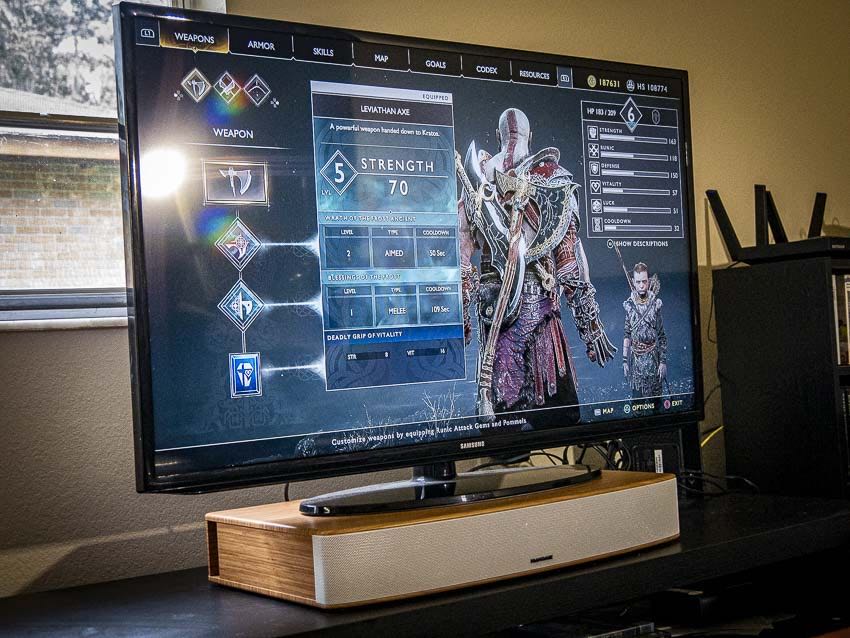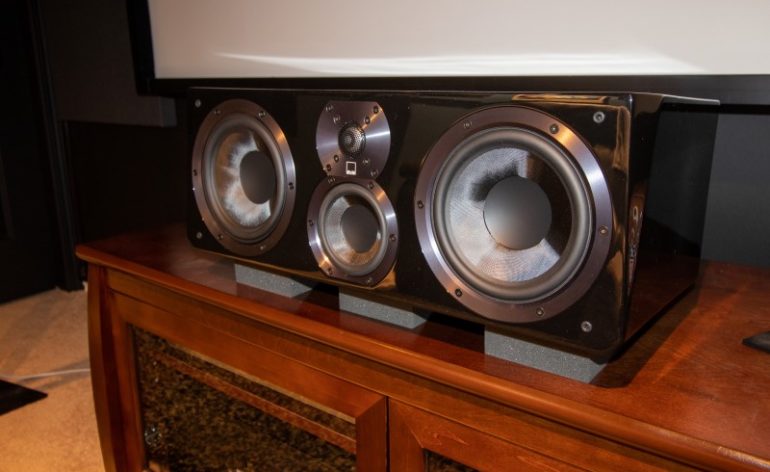Why Don’t We Have Single Speaker Systems?
People (not us) love to talk about how important the center speaker is in a home theater system. This leads some to ask about single speaker systems. Why can’t you just hook up a single speaker to your home theater receiver and start there? What’s the deal? Let’s discuss!
Nope, Soundbars Don’t Count
“Wait a second,” says you. “We do have single speaker options! They are called soundbars!”
Nope, they don’t count. All soundbars get at least a stereo signal from your TV or (rarely) AV receiver. They have multiple drivers that are positioned to at least simulate stereo (and often many more channels). That’s not what we are talking about here.
What is a Single Speaker System?
When someone is on an extreme budget, but still wants to buy quality, they want to concentrate their budget as much as possible. If they can start with just a center speaker, they could spend a lot more on that speaker and get something much better than a stereo pair of speakers. Sure, they’d only have a single speaker system, but they’d have a single VERY GOOD speaker rather than two, lower-quality speakers. Makes sense if you think about it.

The Problem Is Your AV Receiver
As much sense as this might make to some, it really isn’t possible without special equipment or some creative wiring. If you go into your AV receiver’s speaker settings, the fewest speakers you can have is two (front left and right). Trying to select only a center speaker isn’t possible.
This is because for decades everything has been mixed with a minimum of stereo speakers in mind. Having a single, mono speaker system hasn’t been a thing since before your father (or maybe grandfather) was born. Is there any reason your AV receiver shouldn’t be able to take any sound format and downmix it to mono and output it through your center speaker? No. But it doesn’t.
How Would It Sound?
One of the problems with center speakers is the placement. Physics dictates that in order for a speaker to provide decent sound, it generally needs to be fairly large. This allows for lower bass extension and lower costs (making things small generally costs more). Placing a large speaker under your TV is generally met with resistance in most households. But let’s say you could and do. How would a single speaker system sound?
Honestly, probably pretty good! If you’ve ever seen or experienced a stereo system where the speakers are flanking a TV and where the seating is far away, you’ve experienced a single speaker system. Yes, there are two speakers, but they are so far away from the seat that they are generally operating as a single unit.
Would you get convincing side-to-side pans? Nope. But is this any different from using the internal speakers in your TV? Not really. Plus, you could get higher fidelity and better sound quality. Yes, you’d still have to worry about slap echo and other problems that affect center channels specifically, but that was always the case.
Why Can’t You Have a Single Speaker System?
The soundbar people aren’t wrong. You can…but it’ll have to be a soundbar. What you can’t do is buy a great center speaker and connect it to your AV receiver and get sound. The AV receiver requires at least two speakers.
If you are wondering if we should have that option, that is up for debate. If you look at the cost of a center speaker compared to a single bookshelf speaker, the center generally costs more. In our experience, the cost of the center speaker is generally about 2/3rds the cost of a pair of bookshelf speakers. Not always the case, but certainly common. What we are saying is that the cost saving of buying a single center over a pair of comparable bookshelf speakers isn’t all that great.
Plus, while the fidelity would be comparable, you’d miss all of the spatial audio cues you’d get with stereo speakers. A good set of stereo speakers can create not only movement at the front of the room, but pseudo-surround. Are they as good as a full surround sound speaker system? No. But a single speaker system can’t do any of that.
What do you think? Should we have the ability to run only a center speaker as a single speaker system? Let us know in the comments below!


